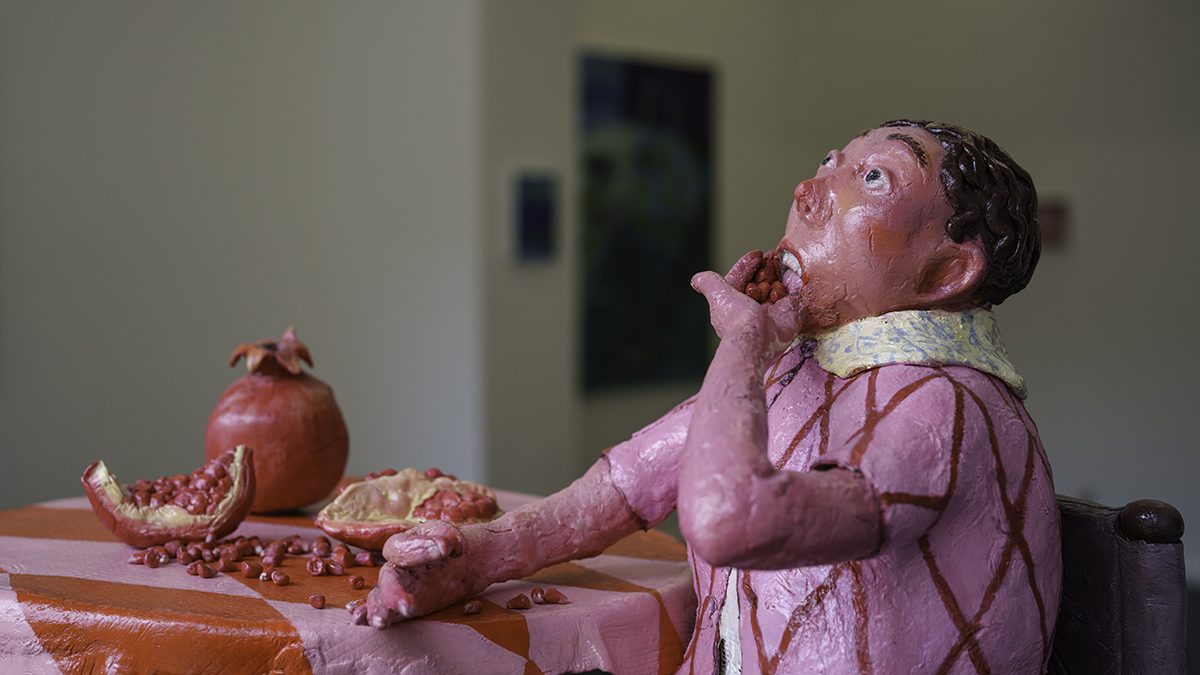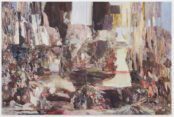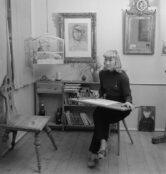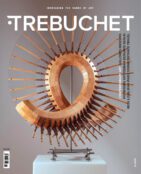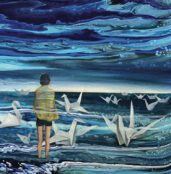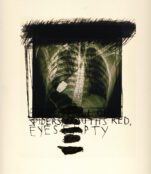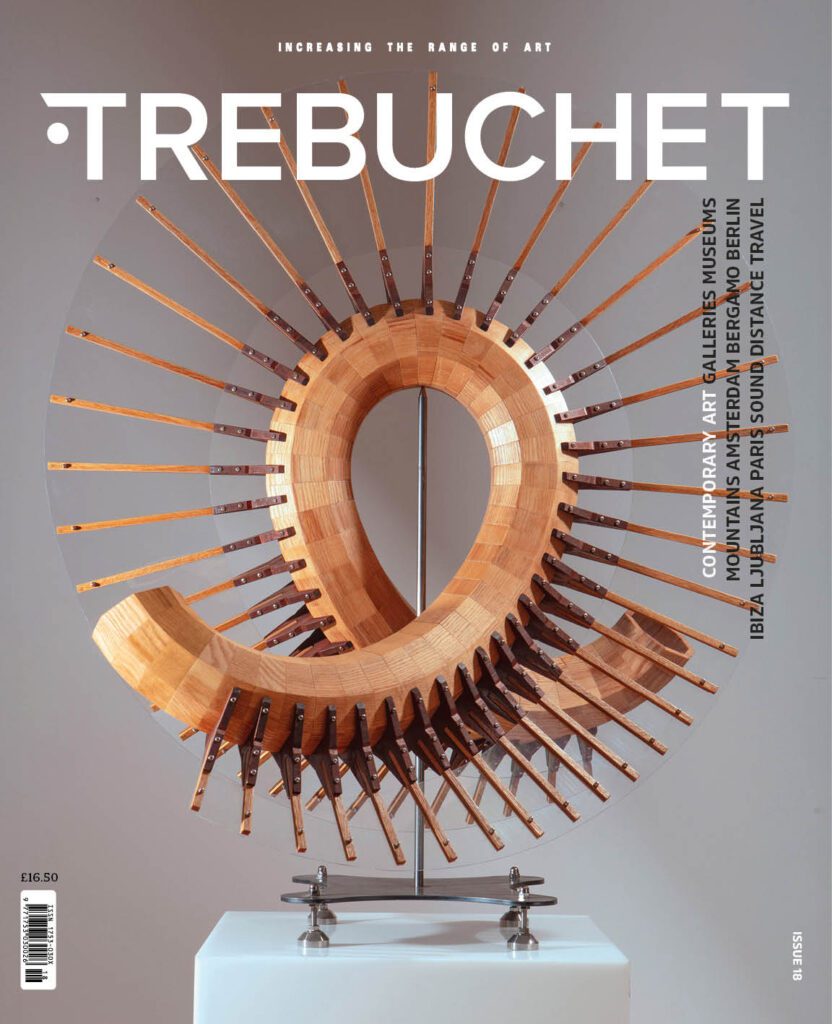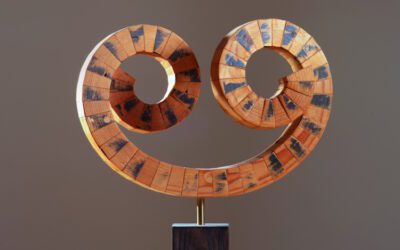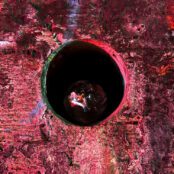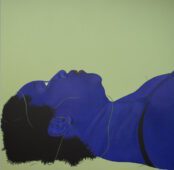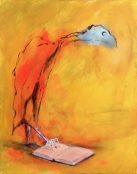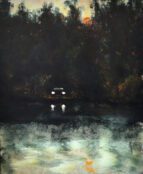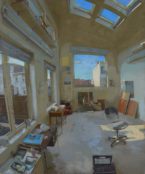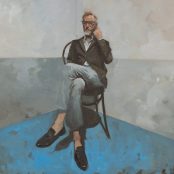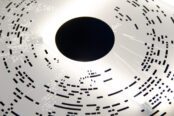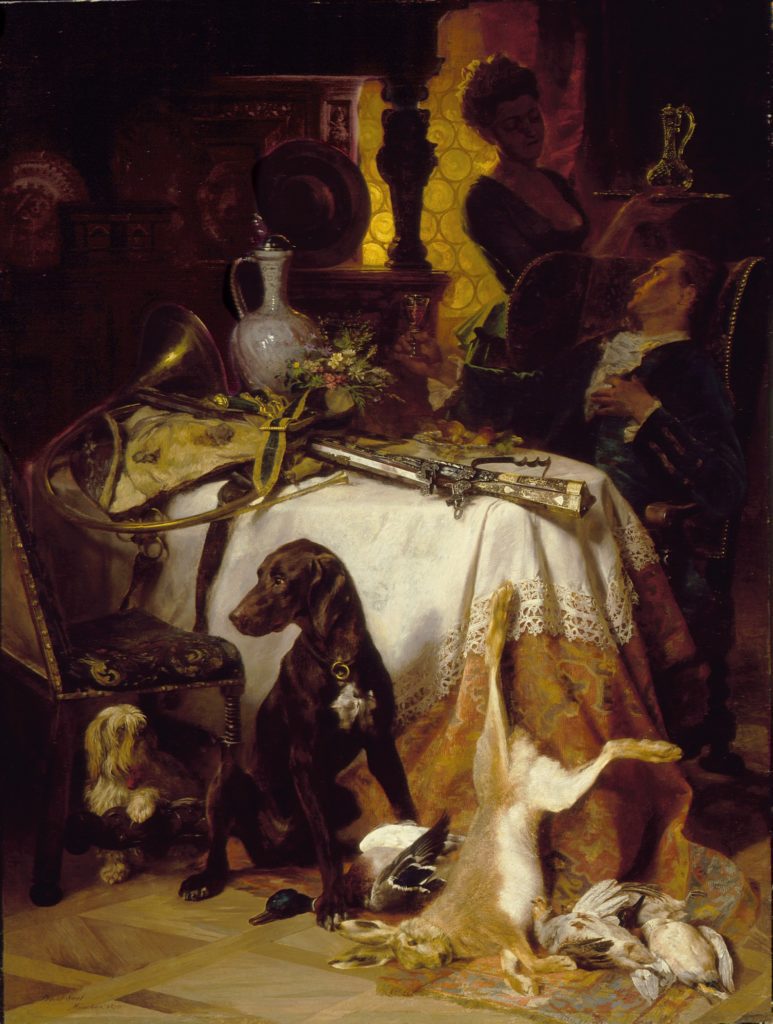In contemporary art, the relationship between an artist and their audience is often that the former sets the scene, and the latter fills in the gaps with their own life experiences, biases, and sensations. To naysayers, contemporary art is self-obsessed, narcissistic, irrational nonsense, but to those who want to delve deeper and understand more than merely superficial aesthetics, there is a great deal of poignancy and discursive quality at the hands of the artist.
All this being said, London and Zagreb-based artist Diana Zrnic’s recent body of work, Hiding Place, at Somers Gallery, curated by Olga Tarasova of Ubiquitous Art CIC, subverts these expectations. Zrnic’s work is rooted in a specific closeness with those around her, and the viewers are outsiders. There is a sense of alienation at play, but one that does not do irrevocable damage; instead, there is an invitation to lean in and learn more. The painterly motifs found in Zrnic’s work are bright, colourful, bounding for attention, which also extends to the sculptures that make themselves at home around the gallery space. Small figures, certainly inspired by real people with real stories but without the hyperreal aesthetic, produce an uncanny effect that leaves the viewer in a state of intrigue.
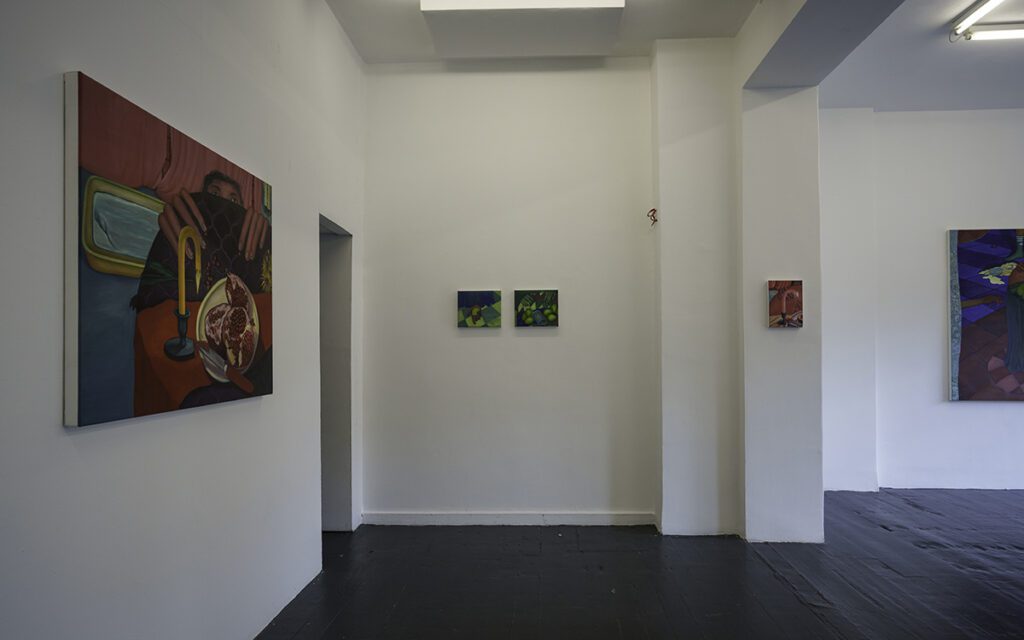
Zrnic’s figures are based on people in her immediate family, depicting their idiosyncrasies and quirks and providing her audience with an insight into the intimate details of people they will never meet. This creates a sensation that the viewer has been let into an inner circle, into the artist’s intimate realm. By observing the mannerisms and behaviours of her loved ones, the viewer can share these special moments; in a world that is increasingly devoid of genuine connections, it is a spiriting experience of which to be part.
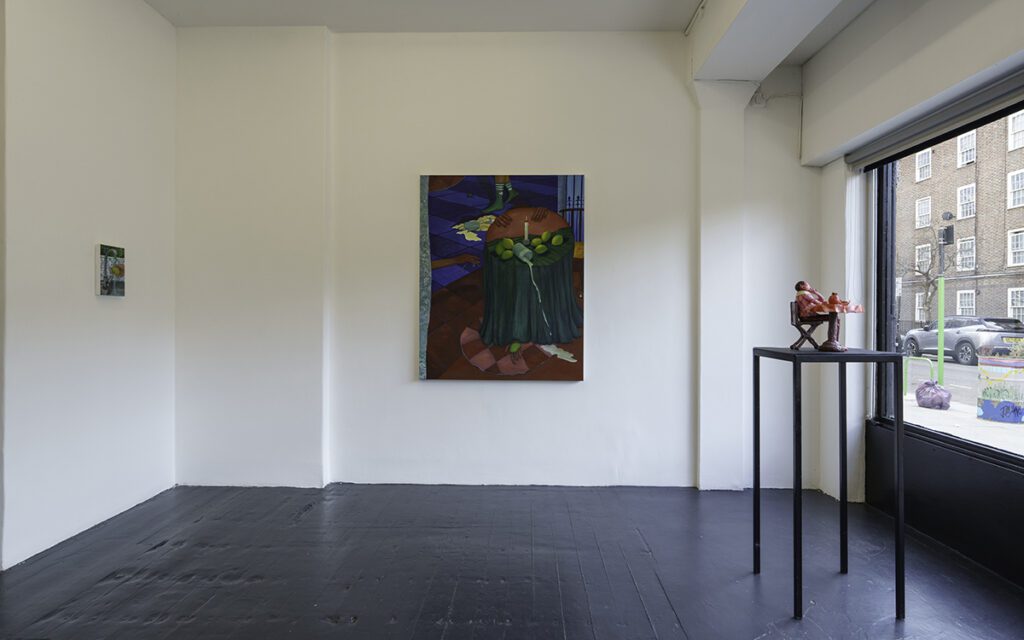
The curation of the show also optimises the opportunity to build connections, or at least observe those experienced by the artist. Sculptures that are both cartoonish and realistic sit in the window, quite literally in the case of Just Past the Hour, where even the most hurried passer-by will spare a few seconds to look into Zrnic’s world, and see her mother eating pomegranate seeds straight from the fruit. The exhibition’s fascination with the equidistance between the rational and the irrational permeates the gallery space; yes, it is entirely rational for someone to sit down and eat pomegranate seeds, but the irrational fragment lies within the viewer asking questions: “who is this person?”, “why is their eating pomegranate seeds deemed important enough to immortalise in an artwork?”, “why are the same shades used in the table, the fruit, and the subject matter?”. There is a lovingly absurd nature to the work, and of course there is no real need to know the answers to these questions; the audience is forced to contend with the irrationality, the absurdity, and the whimsical nature of the artist’s sacred space and her intimate connections.

Elsewhere, paintings can be found that follow a similar school of thought, with fragmented scenes of domestic life stripped of any anodyne connotations by their fractured nature. No full scenes here. Similarly to the reception of the sculptural pieces, there is no repletion, instead a desire to understand more, to know more, to pry more. The domestic space is one of a thousand stories, most of which one could neither know nor imagine, but in being created, exhibited and sold in different locations, Zrnic’s works bring the fundamental magic of the home and the family, whether biological or chosen, back to the fore. While the viewer will not meet those who have closely inspired the artist, the ways in which these real characters love will be replicated wherever the works are found.
Diana Zrnic, Hiding Place, Somers Gallery, London. The exhibition ran from 12-21 Mar 2025.
Images courtesy of Ewan Kerr © Ewan Kerr
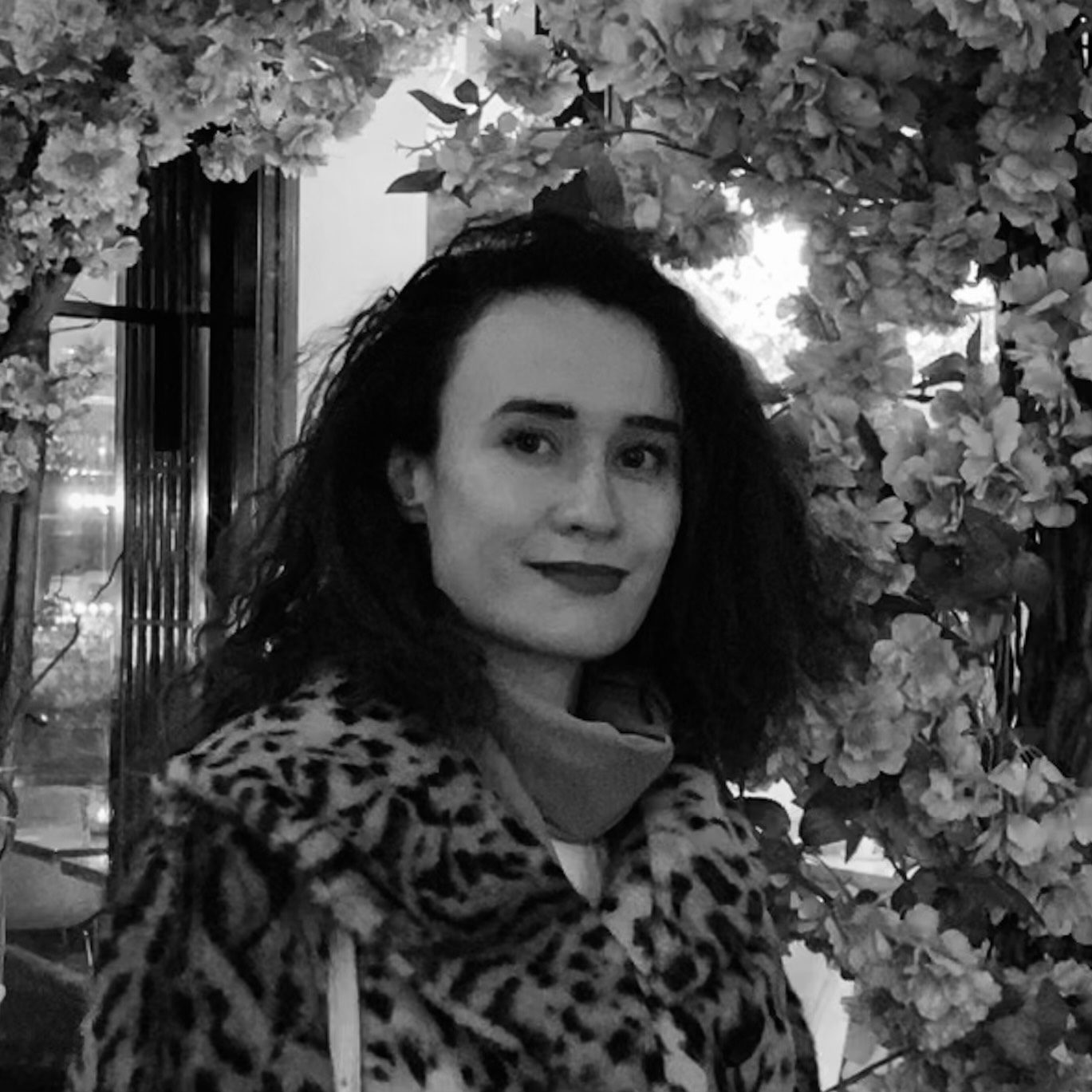
Issey Scott is an arts and culture writer and sometime-curator based in London. She has produced texts for exhibitions in the UK, USA and Italy, and her by-lines include RIBA and The Big Issue. She is fascinated by the post-digital urge to transcend the body

